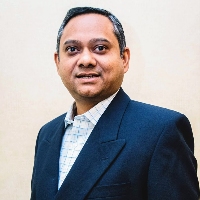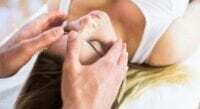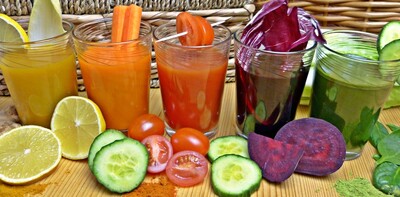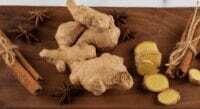
By Vaidya Naina Sudarshan
Fitness is one of the most important aspects of our daily life now for many people. Some people exercise to lose weight, some others to gain muscles, few of them want to manage their chronic ailments through regular exercise and very few folks just exercise to maintain their health.
Though Fitness is a recent trend, physical activity has a long history even back in days when Ayurveda emerged. Ayurveda is not just a type of traditional or Holistic medicines, but as the name itself suggests, it’s the “Science of Life”
As Ayurveda explains the Dinacharya (Daily routine for Health Promotion) in its classical texts, Vyayama was also a part of Dinacharya for ages.
Ayurvedic scholars like Charaka, Sushruta and Vaghbata have mentioned various aspects of Vyayama (Exercise) such as type, frequency, duration, benefits, indications and contraindications of exercise as per the seasons. Apart from these, there are many contexts like chronic diseases and metabolic diseases, “Avyayama” (Physical inactivity or lack of exercise) has been explained as one of the main causes of the ailments. Prameha (Diabetes) and Sthoulya (Obesity) are the most prevalent diseases caused by physical inactivity these days.
What is Vyayama or Exercise?
Activity that results in physical exertion is considered as Vyayama as per Acharya Sushruta in Ayurveda
What are the Types and Intensity of Exercise
It can be a mild, moderate or high-intensity exercise that needs to be decided as per the strength, age and diet pattern of a person along with the season and the weather outside.
Mild to moderate intensity exercises (Chankramana) can include walking, brisk walk and low-intensity cardio exercises which do not result in too much physical exertion on our body but can improve the blood circulation, digestion, functioning of the various organs in the body, clear the obstructed body channels (Srotas) and relieve the mental stress.
High-intensity exercises basically involve the muscles or weight training with repetitive movements such as push-ups, sit-ups, squats, planks, lounges, twists, etc which cause higher physical exertion.
As per Ayurveda people who are Vata predominant body type should do only mild exercise and yoga can be the best option for Vata body type people. Pitta Prakriti (Body type) people go for mild to moderate exercise either yoga and cardio exercises along with a cooling type of pranayam and meditation.
Kapha predominant people need high-intensity exercise to burn the stored fat in their body. Going to the gym and weight training exercises with a combination of cardio exercises on alternate days would be appropriate for Kapha body types.
As per Ayurveda right amount of exercise is personalized which is half of person’s overall strength. One has to stop exercising when the respiration rate increases and the person is starting to feel shortness of breath, dryness of mouth, feeling of lightness in the body sweating on forehead, nose, all joints and limbs indicates the person has reached half of his natural strength. This is called Ardhashakti Lakshana or Balaardha Vyayama which means a person has worked out until halfway of his strength is utilized.
Ideal Duration and Frequency of An Exercise
A healthy person needs to exercise on a regular basis with one day rest in a week to maintain the health. Similarly, people who want to lose weight and manage chronic diseases like Diabetes and Heart diseases need to exercise every day as per their strength. About 30-60 mins a days would be the ideal duration to exercise as per the individual strength and ability. Overdoing any physical exercise can be harmful to our bodies in various ways.
Best Time to Exercise or Workout
Exercise basically increases Vata and Pitta doshas due to their chala (Movement) and ushna (Heating) properties respectively. So, exercising during noon or in the evening can increase Vata or Pitta in our body. Hence, it’s ideal to exercise during Kapha predominant time during-e in the morning which can help to balance all three doshas. Moreover, our strength and fitness levels will be high during morning hours due to Kapha predominance in the body as well.
Exercise time, type and duration can be altered as per the outside weather and seasons too. During Autumn and winter high intensity exercise needs to be done as the body strength will be more. Due to heat in summer and due to Vata predominance in Monsoon season, mild intensity exercises are suggested since the body strength is decreased.
Exercise Contraindications for Older Adults & Pregnant Women
High-intensity exercise is not advisable in old age, during pregnancy, and in people with Vata predominant body types.
Exercise should not be done in any acute health conditions like indigestion, cough, fever, infections until the energy is regained after recovery. In chronic conditions like diabetes, heart disease, hypertension and obesity etc, it’s advised to consult a fitness and health care professional before starting the exercise in high intensity. Similar to medicines, exercise is a prescription and needs to be customized as everyone’s body type, strength and health conditions are different.
Best 7 Benefits of Exercise or Vyayama
- Vyayama (Exercise) helps in establishing the balance between Vata, Pitta and Kapha in our body.
- Exercise also helps in stimulating the functioning of Agni (at all levels) and improves metabolism.
- Improves the strength of the body by increasing the muscles and their tone
- Regulates the proper temperature of the body like a homeostat
- Enhances mental stability and relieves the stress by releasing endorphins and serotonins the ‘feel good hormones
- Delays the aging process by preventing chronic diseases and keeping us fit
- Clears the channels of the body by improving the blood circulation
The concept of Vyayama proves that Ayurveda is not just an ancient system of medicine but it’s the Science of Life and everything mentioned in Ayurveda are time tested and evidence-based well before the existence of Yoga. Vyayama was an integral part of our routine to maintain health in the olden days too.
Note: The information in this article is intended for your educational use only and is not a substitute for professional medical advice, diagnosis, or treatment. Always seek the advice of your physician or other qualified health providers with any questions you may have regarding a medical condition and before undertaking any diet, supplement, fitness, or other health programs.






